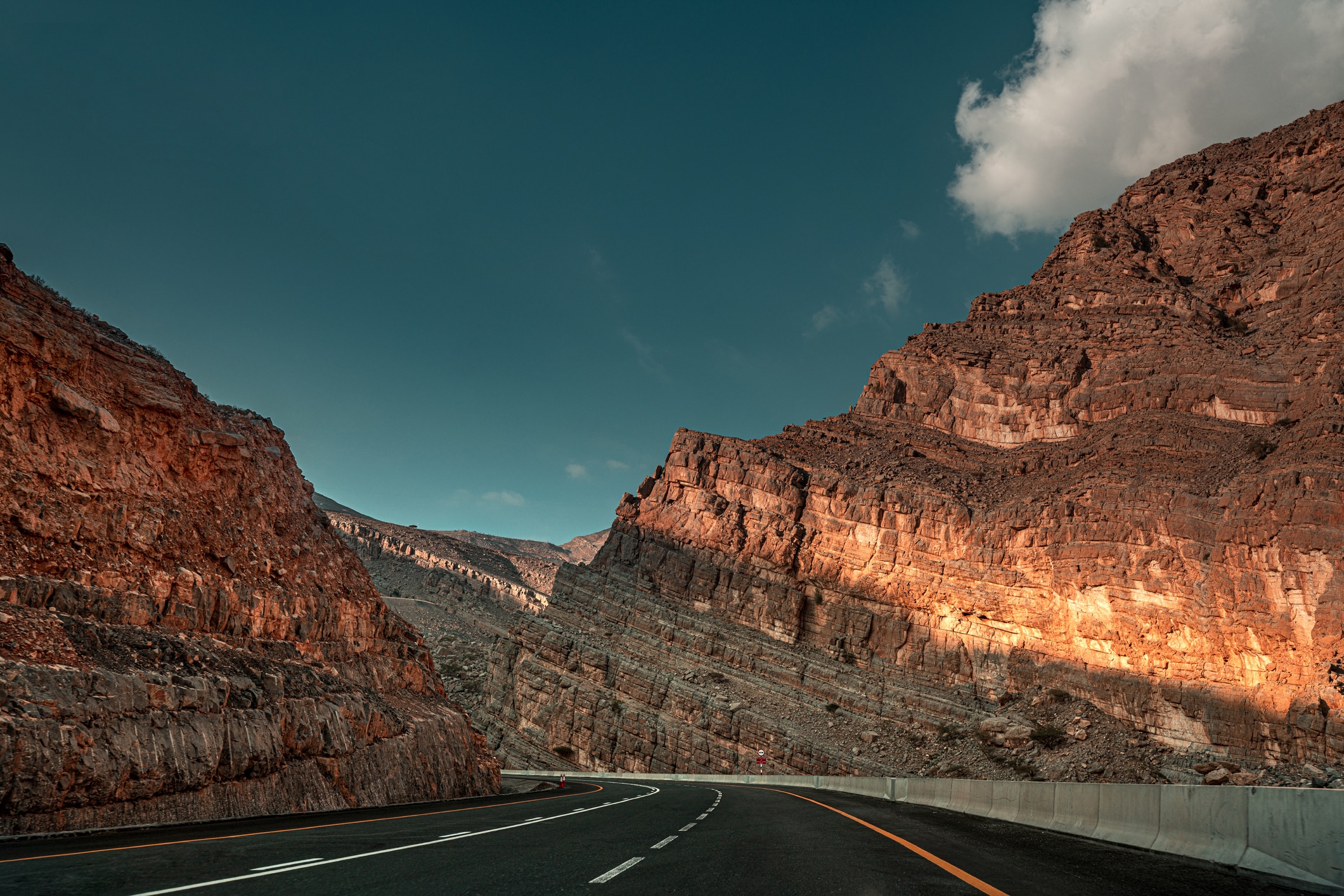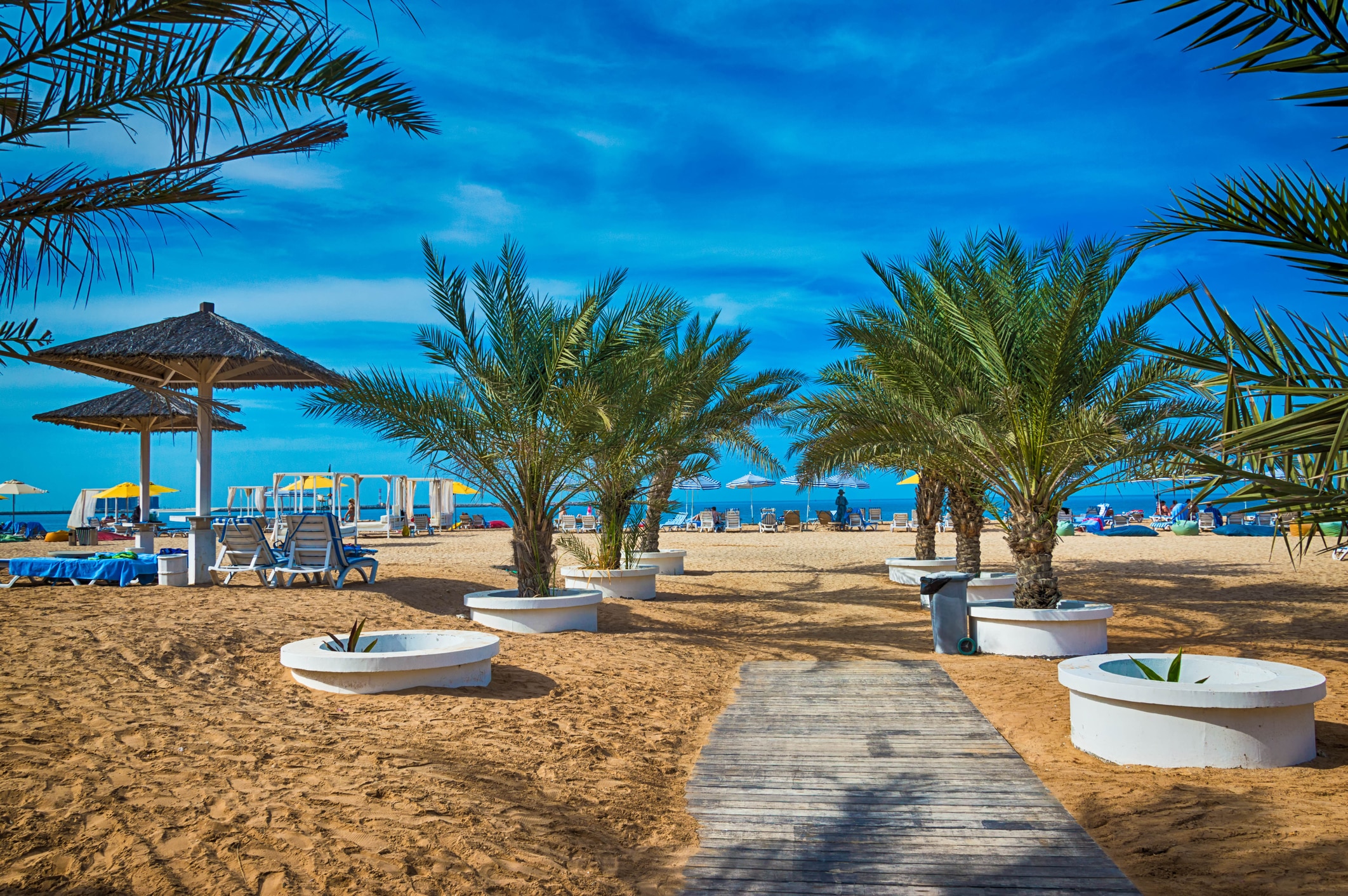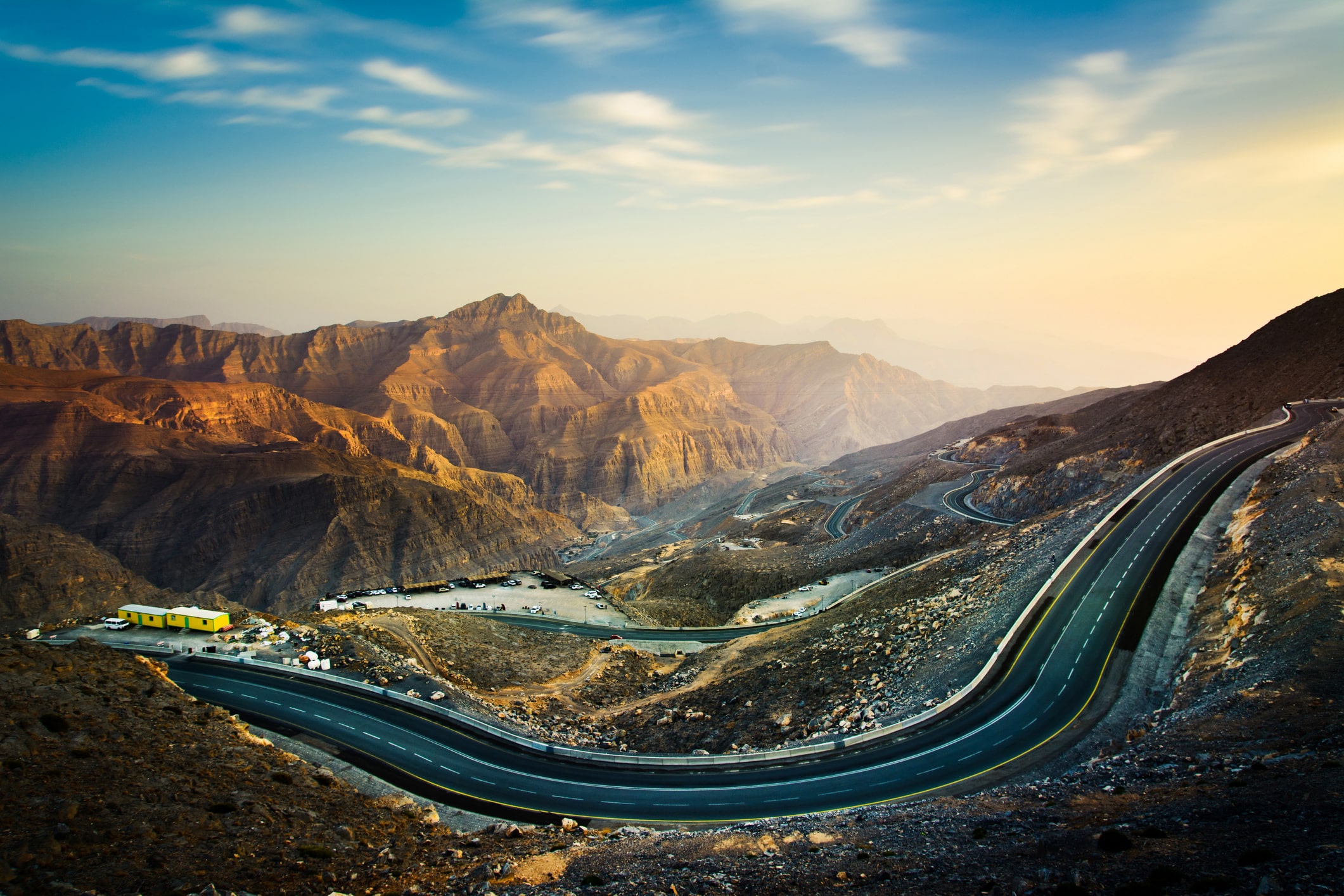The nation’s most adventurous emirate, Ras Al Khaimah – or RAK – occupies the northernmost corner of the UAE. And, with electric vehicle charging points peppering the 113km route from Dubai, getting there in an EV has never been easier.
Surrounded by the formidable Hajar Mountains and spilling down onto golden coastlines, RAK is favoured by beach floppers and hikers alike, while a cultural treasure trove gleams from historical finds within.
The unique blend of cultural richness, natural beauty and modern development offers a refreshing escape from the urban bustle – though high-octane attractions including the world’s longest zipline guarantee a pulse-pounding adrenaline rush.
How to get there: Electric Vehicle charging stations
The drive to RAK from Dubai takes around one hour and 15 minutes along the Sheikh Mohammed Bin Zayed Road (E311) northwards, with the urban cityscape gradually giving way to a vast desert expanse.
With its rolling dunes, rugged terrain and sparse vegetation, the drive is a peaceful one, with an excellently maintained highway slicing through the wilderness. As you approach RAK itself, the landscape diversifies, with looming mountains adding a dramatic background to a city that blends modern infrastructure with traditional Arabian charm.
One full charge should be more than enough to get your electric vehicle to RAK and back, though there are plenty of charging points along the route. Before leaving the city, you can juice up at the DEWA charging point at Dubai Design District or the Mohammed Bin Rashid Library in Al Jaddaf. In Sharjah, charging points include Zahia City Centre and Sharjah Golf Club, while Ajman has a convenient ENOC station on the E311 itself. In RAK, there are over a dozen public charging stations including RAK Police GHQ, Ras Al Khaimah Municipality Department and FEWA EV Charging Station.

The open road across Jebel Jais mountain, the highest peak in UAE.
What can I do in Ras Al Khaimah?
RAK’s most famous attraction is without doubt its 2.8km Guinness World Records-certified Toroverde zip line, which reaches eye-watering speeds of 120kmph. The bucket list-worthy activity catapults daredevils headfirst across the Hajar mountains at 1,680 metres above sea level.
Via Ferrata is another option for exploring the terrain that follows a 1km long route traversed by zip lines, climbing and hiking around the UAE’s tallest mountain, Jebel Jais. Alternatively, you can try the Jais Sky Tour, for a gentler zip through the clifftops, with lines ranging from 337 metres to just over a kilometre.

One of the glorious beaches in RAK.
What can I see in Ras Al Khaimah?
If you’re looking for a bit of peace and quiet, then few places compare to an abandoned village. Jazirat Al Hamra in Ras Al Khaimah has remained almost unchanged since its inhabitants left in 1968, making it a permanent shrine to a bygone era. A former pearling community, the village was populated from the 16th century until a mere 55 years ago, when its inhabitants upped sticks, leaving it completely desolate.
Today, the deserted homes, schools, mosques and forts remain eerily empty, though an increasing number of photography enthusiasts have staged otherworldly shots within its crumbling walls. Hollywood actor Brad Pitt even visited the site between Al Hamra Village and Al Jazeera Port to film scenes for his 2017 film, War Machine.
For a glimpse into the UAE’s past, head up the 234 steps to the nearby Dhaya Fort for stirring views from the mountains across palm trees and verdant lands to neighbouring Oman and down to the sea. The building itself dates back to the 16th century when locals used it for settlement and fortification.

Ziplining is a must-do. RAK is home to the longest zipline in the world.
Where can I stay?
Though RAK is easily reached and well within range, it’s worth bedding down for the night to experience everything the emirate has to offer.
A stay at Ritz-Carlton Ras Al Khaimah Al Wadi Desert is one of the most exciting and authentic ways to discover the emirate’s nature and heritage. Spanning 200 hectares, the desert resort is home to over 100 villas scattered around the protected Al Wadi Nature Reserve, each boasting plush interiors echoing traditional designs. Every tented villa features its own private pool and a private sundeck, ideal for spotting free-roaming wildlife that gallivants around the Wadi Khadeja valley. Don’t leave without getting up close and personal with your new neighbours during a nature walk or a gallop around the dunes on horseback.
The InterContinental Ras Al Khaimah Mina Al Arab is another great option and is ideally positioned for exploring both land and sea. Nestled on the coastline of Hayat Island, the 351 rooms, suites and beachfront villas are cocooned within lush green gardens with mountains looming beyond. Other luxury resorts include Waldorf Astoria Ras Al Khaimah featuring its own private Turkish hammam and the new Mövenpick Resort Al Marjan Island with its three pools and six bars and restaurants.











